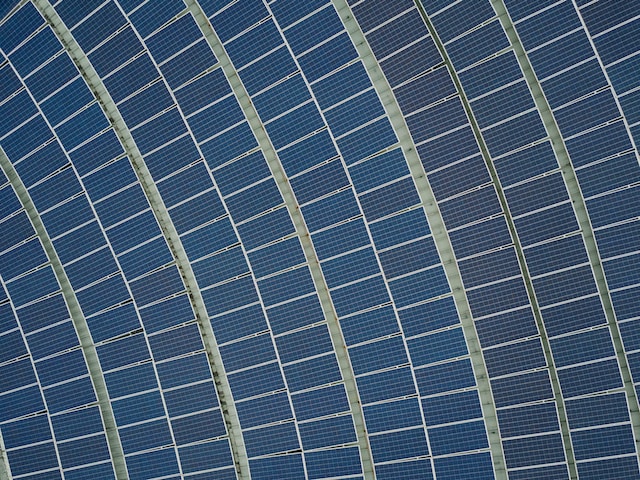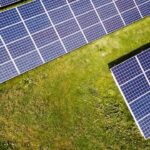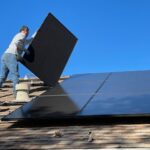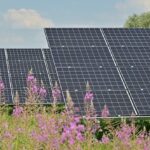Chinese Second-hand Photovoltaic Trade: From Village Mainstay to Exporting to Central Asia
In a small village beneath the bustling city of Kunshan in Jiangsu province, China, a change has come over the villagers. Once busy with card games and fishing, the residents of this village found their livelihood in the export of second-hand photovoltaic (PV) components. However, this year has brought a harsh winter to this once-thriving market.
Cheng Wu (pseudonym), a second-hand PV trader in Kunshan, has been in the business for over six years. In recent years, many second-hand PV components found their way to Central Asia through traders like Cheng Wu. During the heyday of this market, companies were making millions in annual profits. Cheng Wu reminisces, “At that time, we could make at least a few million a year. Each shipping container brought us a minimum profit of 30,000 yuan, and our annual turnover was in the billions.”
“The PV component market has always been about buying high and avoiding low prices. When prices were rising, customers were eager to buy, even raising their own offers. But when prices fell, everyone was cautious,” he explains.
In 2023, the price of new PV components dropped from 2 yuan per watt at the beginning of the year to approximately 1.3 yuan per watt. The secondary market for used PV components also saw a sharp decline in prices. Cheng Wu elaborates, “Major brands can still sell at around 1.2 yuan per watt, while secondary brands are mostly around 1.1 yuan per watt. Slightly better brands like Longi might reach 1.2 yuan per watt, but most are under 1.2 yuan per watt.”
Faced with declining prices, some second-hand traders have started selling components to specialized processing factories as raw materials. “New components are very cheap now, and no one wants to buy used ones. Instead of keeping them in the warehouse, it’s better to dismantle them. Since last year, people have been looking for equipment to turn PV components into raw materials, and that’s when we started,” a salesperson of PV recycling equipment tells the reporter.
PV components generally have a lifespan of around 25 years, and even the earliest PV installations in China may not have reached the end of their useful life yet. “The number of retired PV stations is very small,” says an employee from a national energy-saving solar company. The same source predicts a surge in PV retirements five years from now.
On August 17th, 2023, the National Development and Reform Commission, the National Energy Administration, the Ministry of Industry and Information Technology, the Ministry of Ecology and Environment, the Ministry of Commerce, and the State-owned Assets Supervision and Administration Commission jointly released guidelines to promote the recycling of retired wind and PV equipment. It is anticipated that by the end of the 14th Five-Year Plan period (2025), China will experience the first wave of large-scale retirements of wind and PV facilities, with wind power capacity exceeding 1,000 GW and PV capacity exceeding 800 GW.
However, before this peak arrives, the main players in the second-hand PV market remain the traders and their “jianghu” (a term referring to a close-knit community) of PV components.
Sources of second-hand PV components primarily include PV manufacturers, PV construction sites, and dismantled PV components. Cheng Wu explains that PV manufacturing companies often bid out their defective products, including components of various grades. Grade A components from these factories even come with warranties.
Construction sites of PV power stations also supply surplus components after completion. “Most of our components come from surplus materials at construction sites. There are many PV power stations in Xinjiang, and they use double-sided components. We buy them and then sell them to Jiangsu,” another second-hand PV trader from Xinjiang explains.
The situation with dismantled components varies. Some come from rooftop PV installations dismantled due to rural relocation, others from homeowners who no longer want them, and many are a result of the rapid progress in domestic PV manufacturing. Cheng Wu notes, “In the past, the best components were 400 watts, but now, components below 500 watts are no longer in demand in China.”
Another second-hand PV trader adds that dismantled components mainly come from distributed PV power stations. Centralized power stations in China are mostly operated by state-owned enterprises, and dismantling components involves a lengthy process of dealing with state assets, making it cumbersome to purchase.
Once these components reach the second-hand PV traders in Kunshan, they are resold domestically and internationally, particularly in overseas markets like Afghanistan, Pakistan, Central Asia, and South Africa. Cheng Wu explains, “Afghan customers come to China, visit our warehouse, pack the components into containers, pay in cash, and exchange goods. They pay upfront.”
Afghanistan is just one of the destinations for Chinese PV components. Several Central Asian countries are advancing their energy and industrial transformation, providing opportunities for Chinese PV exports, especially in the second-hand market. In 2022, Central Asia’s demand for PV panels surged, importing a total of 11.4 GW of PV components, a 78% year-on-year increase, according to InfoLink data.
Unlike traditional PV markets in Europe and the United States, local installation companies in Central Asia can manage lower initial investment costs for PV power stations. A salesperson from a second-tier domestic component manufacturer explains that 550-watt, bifacial, and 72-cell components cost about $0.155 per watt (ex-factory price), which is approximately ¥1.08 yuan per watt. This is 20 to 30 cents lower per watt compared to domestic prices. He adds, “In Central Asia, they mainly use downgraded components because it’s difficult for top-tier manufacturers to compete on low prices. There are many inquiries, but not many purchases.”
Downgraded components refer to PV components with reduced power output or minor defects, such as chips or color variations. Cheng Wu notes that downgraded components are around ¥0.2 yuan per watt cheaper than normal used components. “Foreign customers want cheap components,” he explains. “In China, top-tier manufacturers may still have buyers for downgraded components, but for second-tier manufacturers, there are hardly any takers. Installation companies looking for cheap solutions won’t touch them either since new components now cost only ¥1.3 yuan per watt, including a warranty.”
This year, Cheng Wu has spent more time playing cards and fishing with his fellow villagers. He even purchased an expensive fishing rod for the occasion. Even when customers want to buy components now, Cheng Wu is reluctant to sell because, “The components were purchased at high prices earlier in the year, and selling them now would mean a loss. This year has been the worst for me in all my years in the PV business. If I move the stock, I incur losses. If I can’t cover the losses, I’ll have to sell my house and car. We’ve mentally prepared ourselves. If all else fails, I’ll go find a job.”
Local investors and traders are experiencing significant losses in the second-hand PV market. Cheng Wu estimates that the largest local second-hand PV trader may lose over ten million yuan. “For tens of thousands of PV panels, each panel incurs a loss of about 150 yuan,” he adds.
Beyond profit and loss, Cheng Wu also worries about security. He mentions that many people steal PV components from construction sites and try to sell them. “They might steal a thousand or two thousand panels, and we have no way of knowing if they are stolen. We sign contracts legally, but if the money disappears, we face criminal liability. Just recently, I encountered an offer of 1,400 panels. We had agreed on terms, but within two hours, the local police called. Fortunately, we hadn’t signed a contract or transferred money. It’s a nerve-wracking experience. We live on our instincts now. We’re afraid of this.”
Meanwhile, another business related to second-hand PV components—recycling—is on the rise in Henan Province. This region lacks large-scale PV component manufacturing plants or PV production equipment factories, but it has one-of-a-kind PV component recycling equipment manufacturers.
“Last year, our company developed technology for manufacturing PV equipment, and by now, we’ve sold four to five production lines,” a salesperson from a PV recycling equipment manufacturer in Shangqiu, Henan, tells the reporter.
Another manufacturer located in Zhengzhou informs the reporter that their production lines are in high demand, with a waiting time of 60 days to receive orders. They share different processing methods. On Zhengzhou’s production line, machines first remove the junction box on the back of PV panels. During the assembly line operation, workers discard the junction boxes into a box. The panels are then rotated to remove the surrounding frames. As they reach the glass removal machine, the surface of the PV glass is crushed by rollers, producing glass fragments. After confirming that there is no glass residue on the surface, the PV cells are crushed by machines. The remaining debris is transported to various sorting machines to separate metal materials.
On Shangqiu’s production line, they use a waste tire pyrolysis machine to thermally decompose the PV film, followed by crushers and sorting machines. “Many cities do not approve of this type of machine, at least not in Qingdao,” the salesperson remarks.
These machines generate wastewater and smoke pollution. “There will definitely be pollution with chemical treatment methods. We can only try to control it to meet local environmental standards,” he summarizes.
This set of production lines costs around 2 million yuan. The Shangqiu equipment covers an area of about 2,000 square meters, processing approximately 80 tons of PV panels per day, equivalent to 3,200 panels. The net profit per ton of PV panels, after dismantling them into raw materials, is approximately 800 yuan. In Zhengzhou, the equipment can dismantle 9 tons of glass, 1.2 tons of aluminum, 0.36 tons of silicon, 0.12 tons of copper, and 0.48 kilograms of silver in 8 hours, resulting in a gross profit of 1,113 yuan per ton of PV panels.
“We mainly process two types of panels: low-quality used panels with broken glass that can’t be reused and panels that don’t make a profit when resold as second-hand. There’s not much competition in the panel recycling business, and it’s the most profitable now,” says the salesperson from Shangqiu.
They also suggest setting up a factory in Ningxia, where there is a large installation of PV panels, and the panels are older, providing a rich source of supply. He adds, “PV panel recycling is still in its infancy. Not many people are doing it, and there’s not much competition. It’s the most profitable now.”




